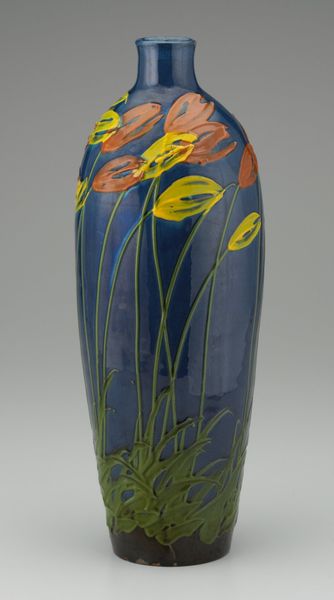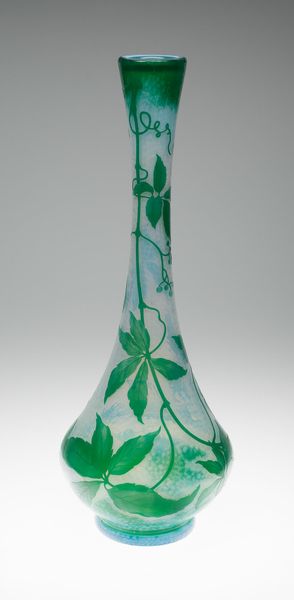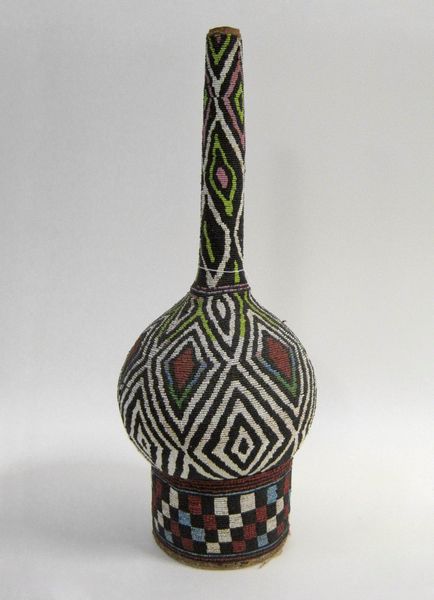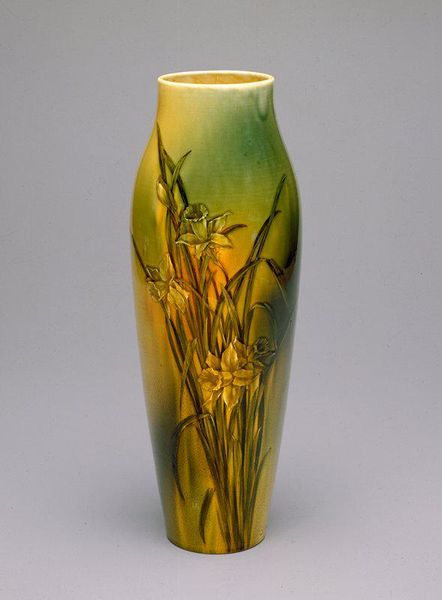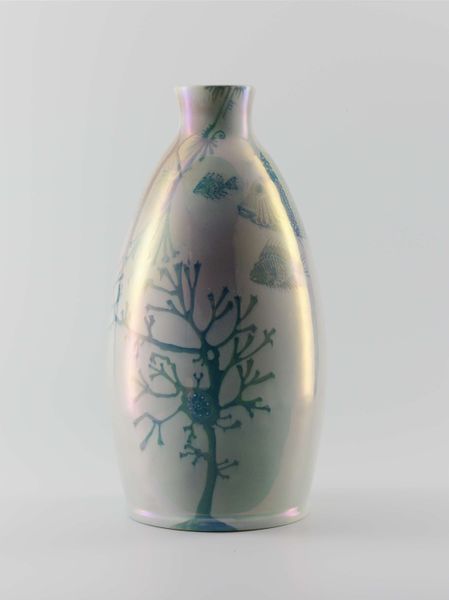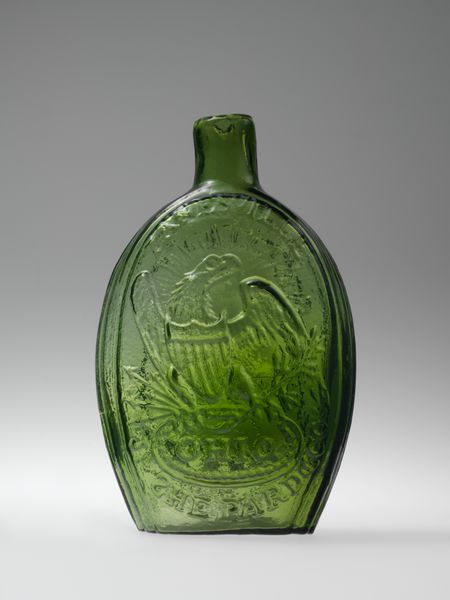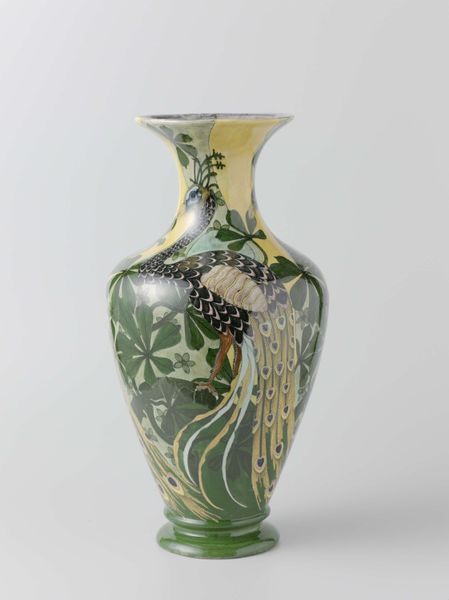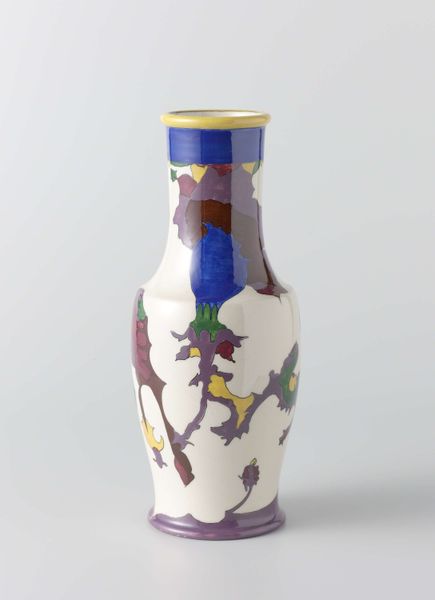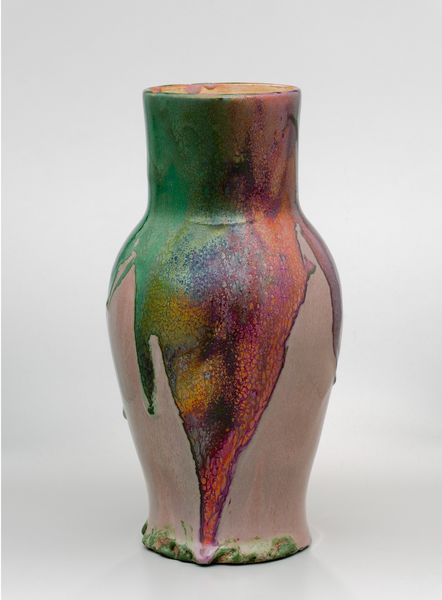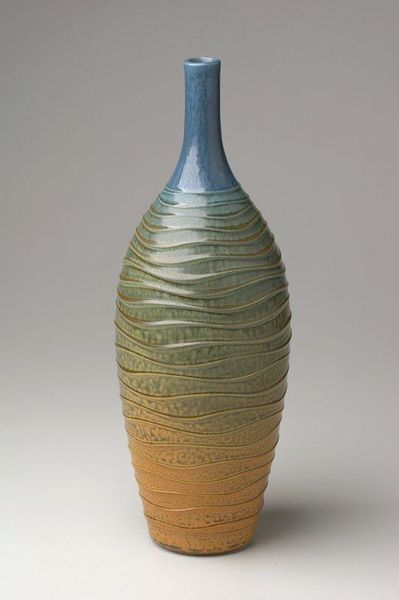
ceramic
#
organic
#
art-nouveau
#
ceramic
#
ceramic
#
decorative-art
Dimensions: 15 1/2 x 5 1/2 in. (39.37 x 13.97 cm)
Copyright: Public Domain
Editor: Standing here, you're immediately struck by the height of this ceramic vase. It was crafted around 1897 by Max Laeuger. I am intrigued by its shiny, almost iridescent green glaze and the organic forms intertwined on its surface. What is your take on the piece, formally speaking? Curator: Considering formal analysis, we can note how Laeuger manipulates texture. The glossy glaze serves to highlight, contrasting starkly with the matte, raised lines which form the decorative botanical and zoomorphic elements. These raised elements physically disrupt the otherwise flawless curvature of the vase, creating an intriguing tactile dimension. Observe how the application of color – the emerald gradients shifting to brown near the base and neck – works to articulate its shape. Editor: It's the color and texture, yes. I didn't quite register the intention of that before. Do you think there’s any interplay between the flatness of the stylized leaves and the roundness of the vase itself? Curator: Indeed. This juxtaposition is central to understanding its aesthetic strategy. Laeuger effectively exploits a tension between two-dimensional representation and three-dimensional form. The surface ornamentation functions simultaneously as surface design and integral component of the vase's structure. Furthermore, note how the design refrains from completely enveloping the form. Empty space becomes crucial, almost acting as a canvas, enhancing the visibility and thus the potency of the Art Nouveau design itself. Editor: That makes it feel more modern, somehow. Is it the asymmetry contributing to that too? Curator: Precisely. It's a subtle yet impactful asymmetry. The eye travels around it, never quite finding a stable, repetitive pattern. This calculated asymmetry further activates the visual plane, imbuing the object with dynamic, organic energy. These formal elements – glaze, relief, curvature, colour, negative space and calculated asymmetry – all coalesce. Editor: I never would have picked up on that subtle asymmetry. It's funny, how much closer you look once you understand what you’re supposed to be looking at.
Comments
minneapolisinstituteofart almost 2 years ago
⋮
Max Laeuger was a painter, designer, architect, and graphic artist. His ceramic pieces, which are characterized by organic surface ornament and bright color, were manufactured by the Tonwerke Kandern Pottery between 1895 and 1913.
Join the conversation
Join millions of artists and users on Artera today and experience the ultimate creative platform.

